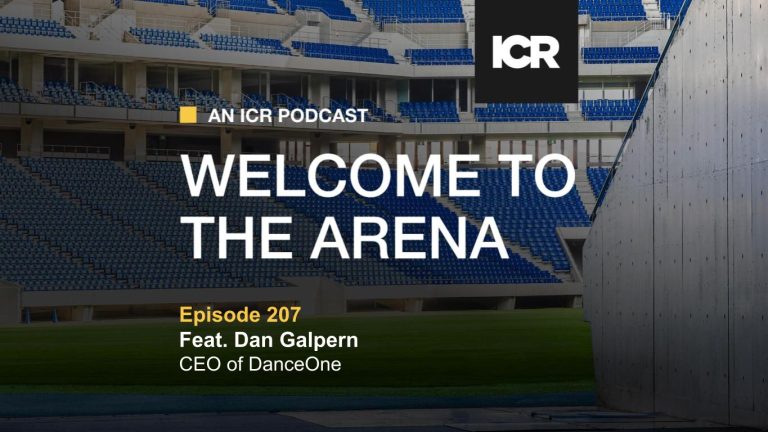So, you’ve decided to take a serious look at entering the world of healthcare communications, a diverse blend of scientific storytelling, strategic planning, and media relations across global markets. A former manager once told me, “There’s no textbook for this.” Although technically not accurate, those words have rung true and reflected the reality that—while there are academic programs in communications—you’ll be doing much of the learning on the job, particularly when it comes to navigating the complexities of the international healthcare landscape.
A background in science can be helpful, but interest is more important
While some healthcare communications professionals have made the transition from careers in science research or academia, plenty of their peers have advanced without PhDs or degrees in science. A relevant background can certainly be helpful, but it’s more important to have a genuine interest in healthcare and what companies are up to across different markets, and articulating what they do to diverse international audiences.
You’ll have the opportunity to work with, or at, all kinds of companies
These include a wide range of sectors and stages operating across global markets:
- Biotech and pharma
- Medtech and diagnostics
- Health tech and digital health
- Healthcare services and health IT
- Preclinical stage startups to established industry players with commercial products
- Private and publicly traded companies across North America, Europe, Asia, and emerging markets
Agency or in-house?
Once you’re committed to entering healthcare communications, you should determine whether you prefer an agency or in-house position. Agencies offer the opportunity to work with multiple clients in a fast-paced environment, where you can rapidly develop skill sets through managing multiple accounts and working with various client teams across different regions and regulatory environments.
At internationally connected firms like ICR Healthcare, you’ll gain exposure to the full spectrum of integrated communications services – from investor relations and public relations to capital markets advisory – while working with healthcare companies navigating critical growth milestones. This comprehensive approach allows you to understand how strategic narratives translate across different cultural contexts and regulatory landscapes.
In-house positions allow you to become more deeply involved in a single company, and can be especially rewarding if you’re passionate about its mission, work, and what they have to offer.
Regardless of your initial choice, people commonly switch between agency and in-house positions at some point in their careers.
Mastering communication for multiple audiences across global markets
Healthcare companies have complex stories to tell, but they should be tailored for different audiences across diverse international markets and cultural contexts.
- General public: Avoid jargon and focus on accessible language; highlight how the company’s work impacts everyday lives across different communities and regions.
- Patients: Use accessible language and address patient concerns, hopes, and needs, while being sensitive to cultural differences in healthcare expectations and communication preferences.
- Physicians: Emphasize clinical benefits, safety profiles, patient outcomes, and practical implementation, adapting to different medical practice standards across regions.
- Investors: Focus on market opportunity, competitive positioning, and key value drivers, understanding how different markets evaluate healthcare investments.
- Media outlets:
- International/National: Emphasize broad societal impact or major breakthroughs with global implications.
- Business: Highlight financials, leadership, and international market opportunity/strategy.
- Industry trade: Provide technical detail and deeper insights about drugs, devices, and clinical trials; highlight regulatory milestones across different jurisdictions.
- Regional/Local: Connect the story to specific communities (e.g. job creation; partnerships with local companies, organizations or governments; headquarters or key facilities in the area).
What kind of work is involved?
There are typically no weeks that are the same in healthcare communications, and a major reason is the variety of the deliverables you’ll be working on day-to-day:
- Press releases
- Media lists and pitches across international outlets
- Messaging documents tailored for different regional markets
- Backgrounder documents to help prep for media interviews
- Company fact sheets
- Industry award nominations
- Social media calendars adapted for different markets
The same goes for the variety of corporate milestones, strategic narratives, and executive visibility opportunities, including but not limited to:
- Company announcements
- Clinical trial milestones
- Regulatory approvals
- Product launches
- Research and business collaborations
- Executive and board appointments
- IPOs, SPACs, and other fundraising milestones across different exchanges
- Quarterly earnings reports
- Company events
- Celebrations of new facilities and partnerships
- Ribbon cutting ceremonies involving government officials
- Thought leadership: elevating executives and patient advocates
- Profiles and Q&As
- Bylined articles
- Quotes in trending articles
Media relations: the art of persistence and customization
It’s important to recognize that most of your media pitches won’t get a response, and even securing an interview doesn’t guarantee an article. It’s nothing personal – reporters receive dozens of pitches each day and can only write so many articles or quote so many experts. A pitch or interview might be considered good, or even great, but may simply not be the right fit for a reporter’s coverage at that time.
To maximize your chances, the classic sales mantra applies: focus on how you can help reporters, not the other way around. Pay close attention to what they’ve recently covered and customize your outreach accordingly, with the goal of building long-term relationships across the international media landscape. You can provide value even when you’re not pitching a particular announcement or event, such as offering expert commentary on trending news or sharing relevant research to support their reporting.
Understanding different media landscapes – from the financial press in London to healthcare trades in Boston to digital health publications in Silicon Valley – helps you build a more comprehensive and effective media relations strategy.
Closing Thoughts
In healthcare communications, you have the opportunity to make a real impact by effectively conveying the significance of scientific innovations and making complex information accessible to diverse audiences.
Whether you choose the agency or in-house path, success comes from staying curious about emerging global trends, building authentic relationships across the international healthcare ecosystem, and maintaining a strategic mindset that drives real value for the companies and patients we serve. The field offers many paths to success, and the opportunity to be part of transformational moments that advance healthcare innovation on a global scale makes this career both challenging and deeply rewarding.



